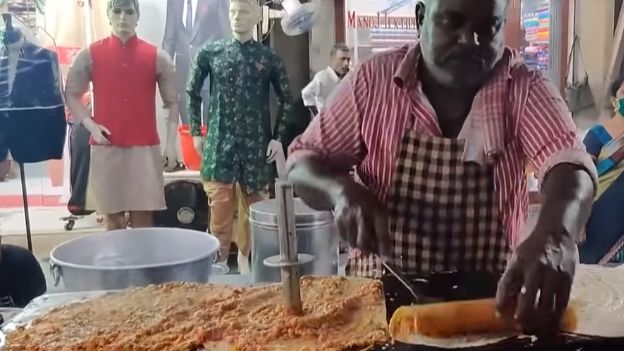India has 1001 strange things that ordinary people like us cannot imagine, from movies to extremely normal things in real life like street food for example. Would you dare to eat this or the cake with a hint of foot odor? Or the story of this uncle who doesn't have wing inflammation. If you are too thirsty here, maybe you should make a bottle of tea and see how it goes.
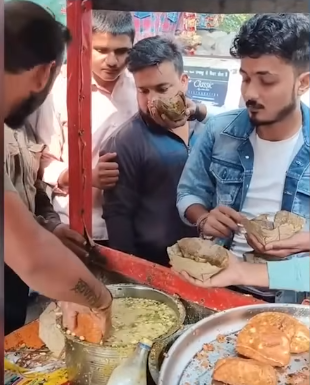
In fact, street food holds a very special position in the culinary history and culture of India. Indian street food is globally famous for its diverse flavors. Wherever you go, you can find delicious dishes whether in the city, small towns, or villages. It is unclear when street food became popular in India, but most sources indicate that the street vendors began to invade Delhi when Emperor Muhart left Ara. Along with the departure, the most popular street food in India today first appeared thanks to talented chefs invited by the officials of the Muhart Vahadishi dynasty to open a shop.
In parallel with that, sweets have also become an indispensable part of all festivals in India. When it comes to street food, India is second to none. In addition to famous dishes like Chana and Jalebi, India has hundreds of thousands of dishes to explore, whether in the east, west, south, or north, each region of India has its own unique specialties thanks to the combination of many exotic spices and ingredients. However, taste is not the only thing that makes Indian street food attractive, and there are many reasons that you need to observe in person to understand.
Sometimes while walking on the street, one cannot resist the enticing smell coming from the roadside food stalls. Even if you are full, you cannot resist the temptation to have a bowl. Second, have you ever noticed people eating roadside food? Some slurp, some lick their fingers, some sniff before eating. That's why most people like to eat on the street, eat the way they want without judgment. Because honestly, who doesn't do that, but the biggest and most important reason is that street food is the most budget-friendly option for those with insufficient income, unemployed people, street food in India is like a blessing for everyone.
Whether you are rich or poor, you can always buy delicious hot street food every day. Millions of people in India and foreign tourists enjoy street food from street vendors, making street food a precious pride of this country. In 2021, when street food culture in Singapore was recognized by UNESCO as intangible cultural heritage of humanity, Indians also want their street food to be similarly recognized.
What is happening here? If we say "street food is a heritage, then street vendors are the ambassadors introducing that heritage to the public, and their carts are display booths. Why are there such images?
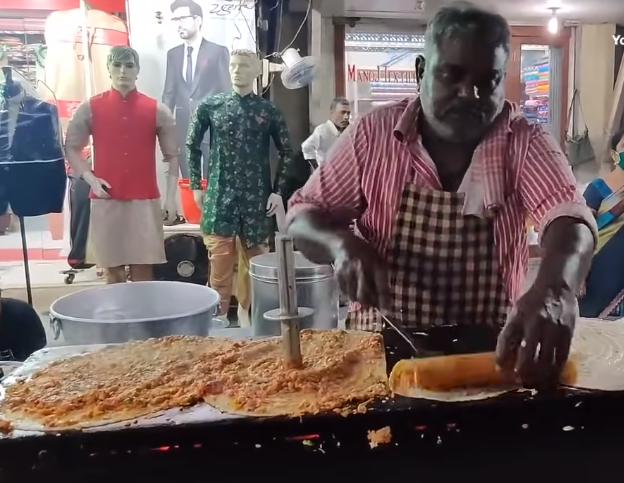
Is this the truth about Indian street food? Indians have the right to be proud of their cuisine, but the rest of the world may not be so kind. I mean, has the steel stomach felt this beauty? To explain things like this, I think we have some clues. Street food is popular, an important reason is that it is cheap. For low-income people, the poor who cannot afford to eat in fancy restaurants, street food is their best choice. However, who are the street vendors, the answer is many of them belong to the Dalit class.
If you are not familiar with the caste system in India, Dalits are considered the lowest class, the poorest people at the bottom of society, not having access to the most basic services such as education, clean water, or sanitation. So don't ask why they have no concept of food safety, even if they know, they don't have the conditions to practice. These street vendors make a living by cooking and selling food on the streets, they have to do so because street vending does not require much capital like opening a store. Many people prepare food by hand. Yes, by hand, their hands are used to exchange money and do other things that only heaven knows.
According to statistics, only 53% of Indians wash their hands with soap after defecation, 38% wash their hands before eating, and 30% wash their hands before preparing food. You know, in the waste of humans and animals, there are bacteria like E. coli or Salmonella that can be transmitted to food and grow rapidly in a warm and humid environment. Next, they invade the human body if meat and vegetables are not properly washed, or contaminated during food processing. Bacteria can also get into your food through flies exchanging cash with dirty hands or through contaminated water.
A reporter from The Guardian once tested how safe street food in Mumbai is by going to a 3x3 meter wide restaurant located next to a dusty road, a crowded train station, a bus station, and facing a public toilet. The reporter ordered Pabahagi, one of the most popular street foods in Mumbai. It includes buttered bread with a sauce made from mashed potatoes, pomegranate tomatoes, red chili peppers garnished with coriander squeezed with a little lemon, and you guess before the surprise of the reporter, the test results showed that the food sample was within safe limits.
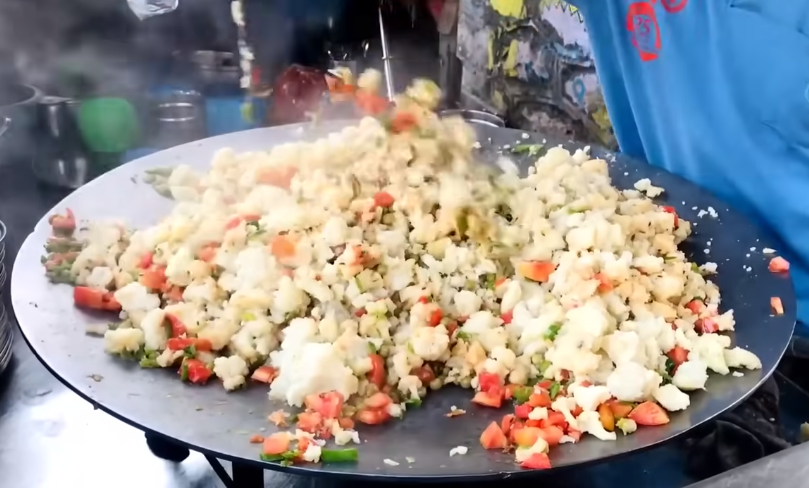
The expert explained that perhaps this dish was cooked thoroughly and used many antibacterial spices. However, the expert also advised that this is just a specific case, moreover, the air where the food is cooked and the utensils containing the food are not tested. So it can be said that the problem is not with street food but with India. A British politician is said to have said something like this, "Indians don't even know how to throw away their own excrement." This Indian Minister of Rural Development has also stated that his country needs more toilets than temples. However, solving public toilet needs has become a difficult problem in India to the point that even if there are toilets, people still prefer a bit of sadness outside because they feel more comfortable doing so.
The lack of hygiene is evident everywhere in India, hotels, hospitals, households, offices, trains, airplanes, and of course, temples.
Many people spit wherever and whenever they want. But is it true that the nature of Indians is unhygienic? No, no one is born unclean, Indians are just like us. They also like cleanliness, I even witnessed Indian tourists happily taking pictures of cleanliness.
We have to consider the factors that only India has, first is the attitude of considering cleaning as someone else's job. We have talked about the caste system, adding that each caste is designated for specific jobs, cleaning toilets and common areas are for the lower Dalit class. Specifically, a branch called sapai wallas is considered servants who must use separate dishes to eat on the floor, go through the back door.
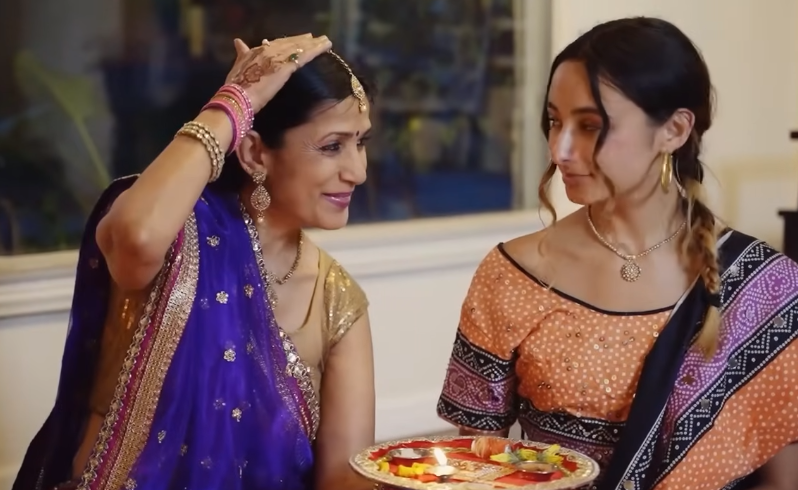
Now the caste system has been abolished in name, but in India, people still argue why servants should not use the main elevator and must have separate toilets. Second is serious gender inequality, cooking cleaning house care is naturally for women, but that also means that men never learn how to clean, always rely on their wives to do all those things. Third is the common belief that no one visits any house in India, you will see extremely clean inside the house. However, just stepping out of the neighborhood, you will see the difference, people never throw trash in their homes but casually throw it outside, as if they do not consider public property as their own. So they don't feel responsible for it and just like that, the selfish mindset is passed down from generation to generation.
Of course, what we say here cannot be true for 100% of Indians because there are conscious and unconscious people everywhere, just like street food stalls, not every place is unhygienic. Many places have designed open kitchens so that diners can see how the chefs prepare the food, whether food safety is ensured or not? This story is told to show how an individual's awareness can greatly affect the interests and image of the whole group. And I think as Vietnamese, we can also learn a lot from that story.
